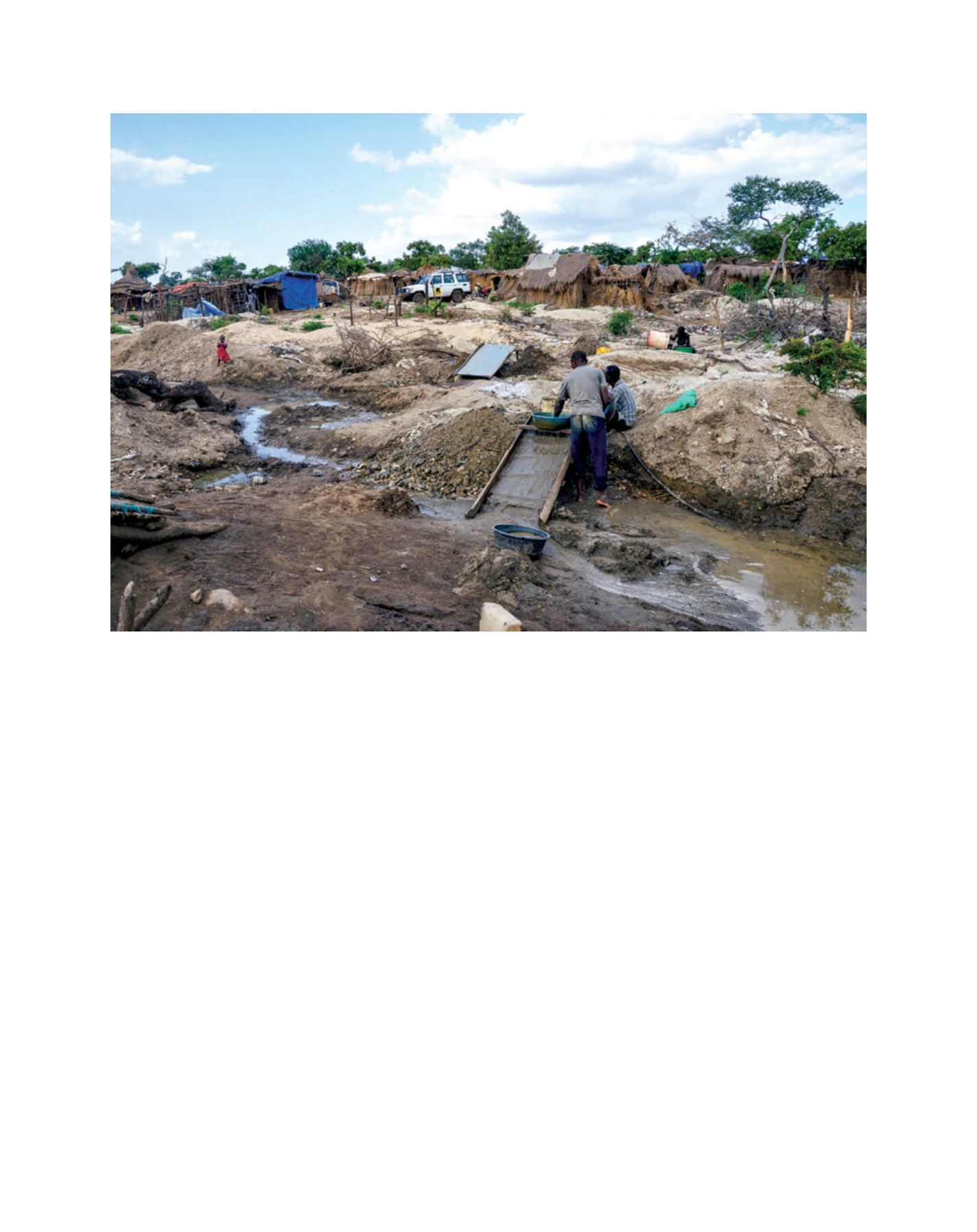

[
] 145
Some people in Karamoja survive and cope during dry
periods in spite of extreme poverty and vulnerability.
Different survival practices with negative and unintentional
consequences are utilized for survival. These include sand
mining, gold mining and charcoal burning. The large number
of NGOs and United Nations organizations involved in
humanitarian support also assist livelihoods to survive but
this is not sustainable due to the development of a depend-
ency syndrome among the people in Karamoja.
The best and most sustainable example of coping with dry
periods is the pastoralist system.
11
Pastoralists have sufficient
land to follow the water and grazing. They move their animals
from the dry regions to regions with sufficient grazing. The
current land ownership system and relatively low animal
numbers allows for such movement. However, the restock-
ing programme from the Government is threatening this
strategy. Animal numbers in Karamoja declined by about 50
per cent after the successful disarmament programme of the
‘Karamoja warriors’ in 2008. An unintentional consequence
was that rebels and others from neighbouring south Sudan
and Kenya then raided and stole large numbers of animals
without resistance from the Karamoja pastoralists. Reduced
animal numbers allow for the recovery of overgrazed land
and therefore sufficient grazing for pastoralists. Restocking
will increase pressure on available grazing and the pastoralist
system will also be more vulnerable to dry periods.
Drought risk is a more complex problem than what is
normally defined as a negative deficit in annual mean rain-
fall. Rainfall distribution is important, as is annual rainfall,
but farmers, government and development partners cannot
do anything about that. When farmers start to experience
droughts every second year, clearly there is a problem with
the agricultural system; it is not adapted to the current
climatic conditions and requires adaptation, or farmers
employ risk-seeking methodologies such as poor agricul-
tural practices.
Most of the droughts experienced in in Karamoja since
2000 are in fact man-made and not the result of poor climatic
conditions; that means that agriculturalists and pastoral-
ists can do something about drought risk. They can reduce
drought risk and build resiliency against drought simply by
implementing good agricultural practices. In order to achieve
that, they must have the necessary knowledge and institu-
tional support. Limitations in terms of cultural beliefs, gender
and security should also be addressed.
Development partners such as NGOs and United Nations
organizations can reduce drought risk by implementing
coordinated and specifically designed programmes with
a focus on drought risk reduction. Government should
develop and implement policies and create an environment
for sustainable development according to a commonly
agreed strategy in Karamoja.
Gold mining is a survival practice that has negative and unintentional consequences
Image: DiMTEC
L
iving
L
and
















